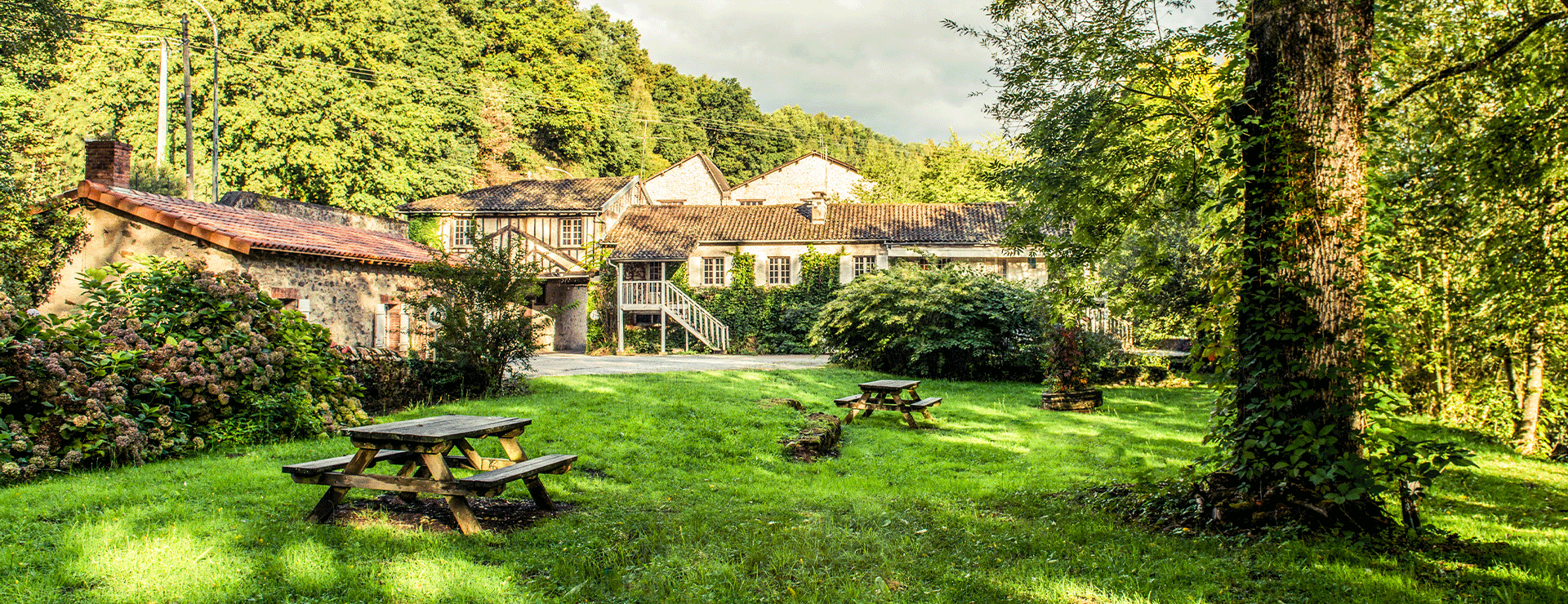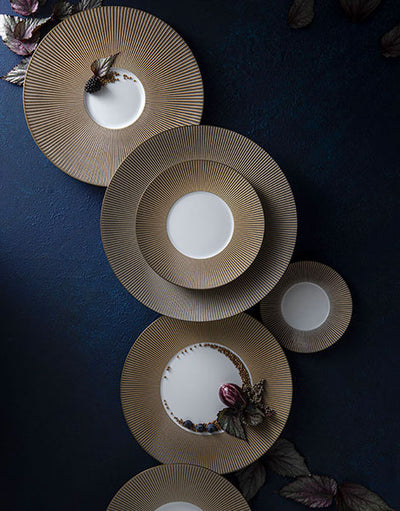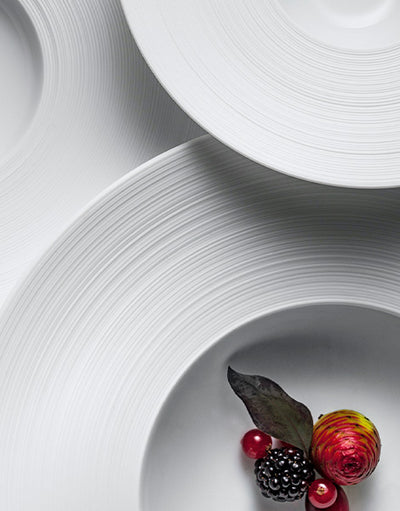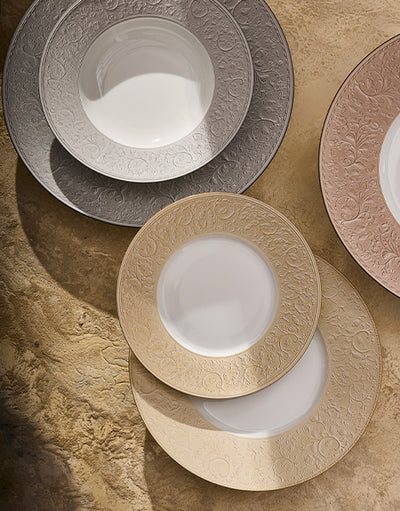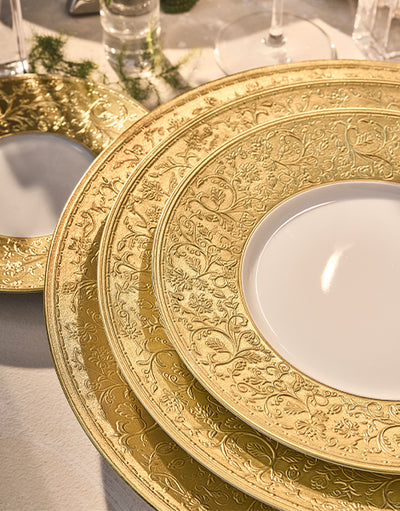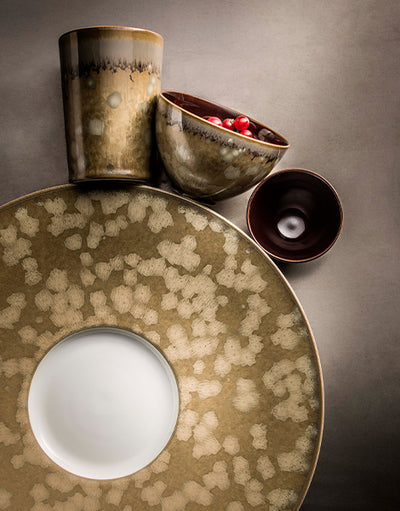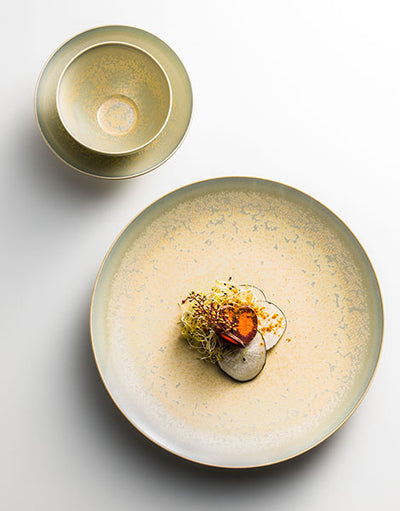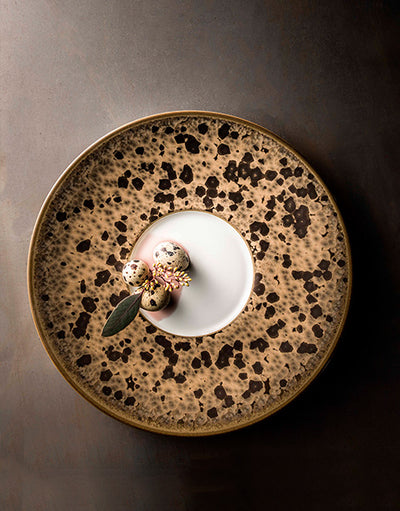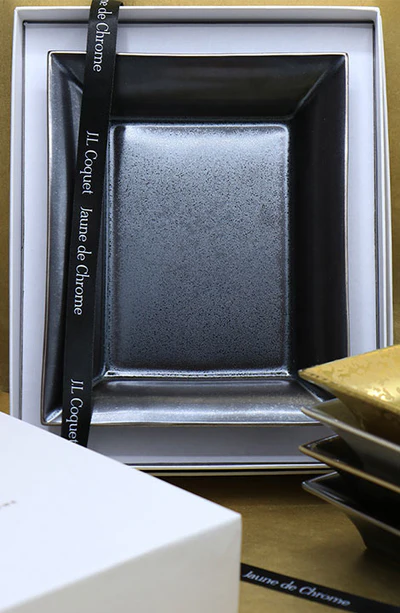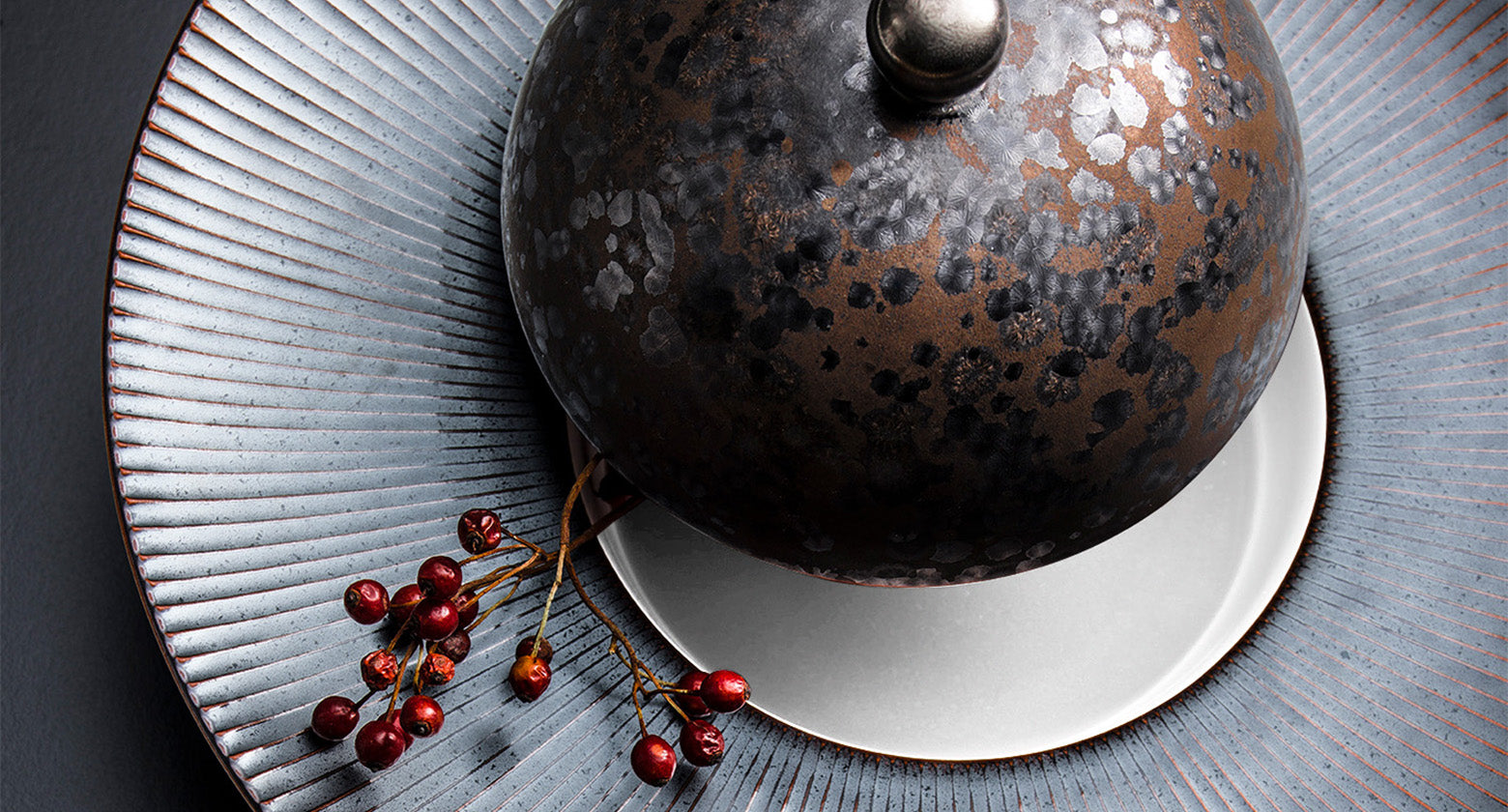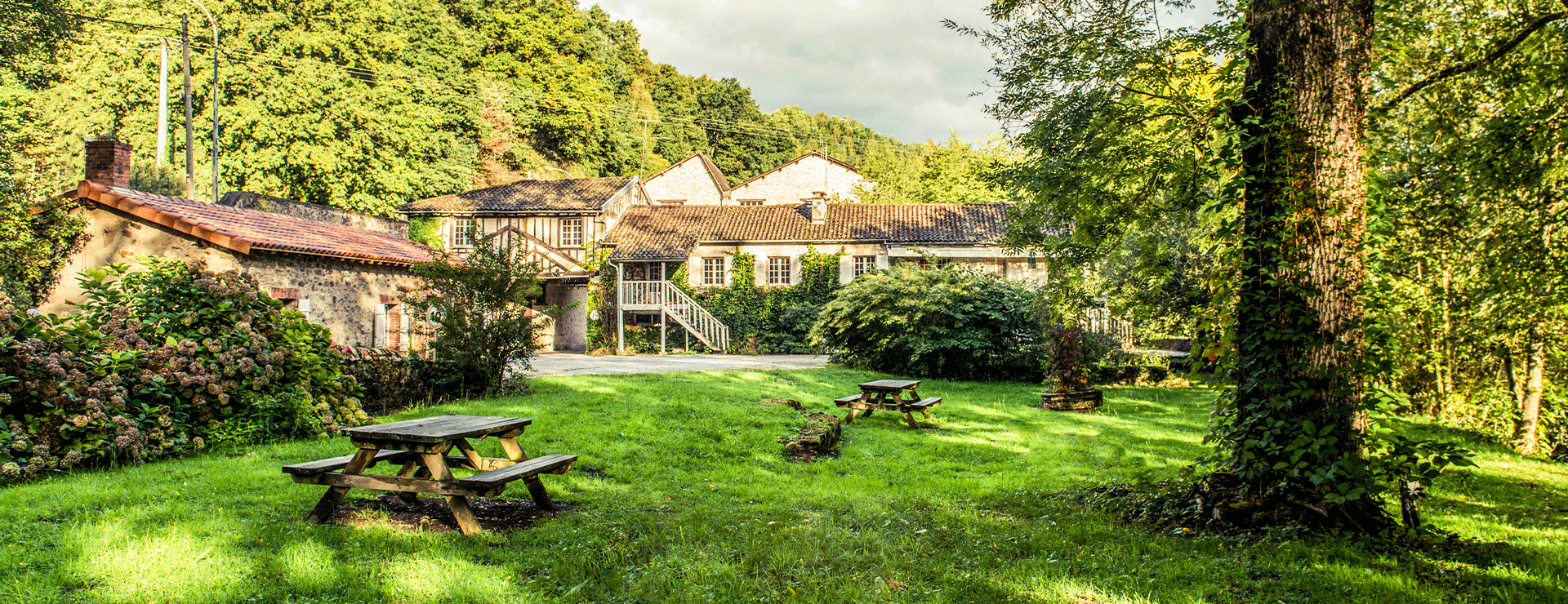
History
The Manufacture of Limoges
Fondée en 1824, à 25 kilomètres de Limoges, J.L Coquet est renommé pour la pureté et la délicatesse de sa porcelaine ainsi que pour l’excellence de son savoir-faire traditionnel. Blancheur translucide de la matière, éclat des ors, contraste des couleurs et finesse des gravures sont le signe de distinction de ses collections. Labellisée Entreprise du Patrimoine Vivant français et IGP, cette Maison d’exception est devenue le symbole d’un Art de Vivre à la Française et d’un savoir-faire « Made in France », dont on retrouve l’élégance sur les plus belles tables étoilées.
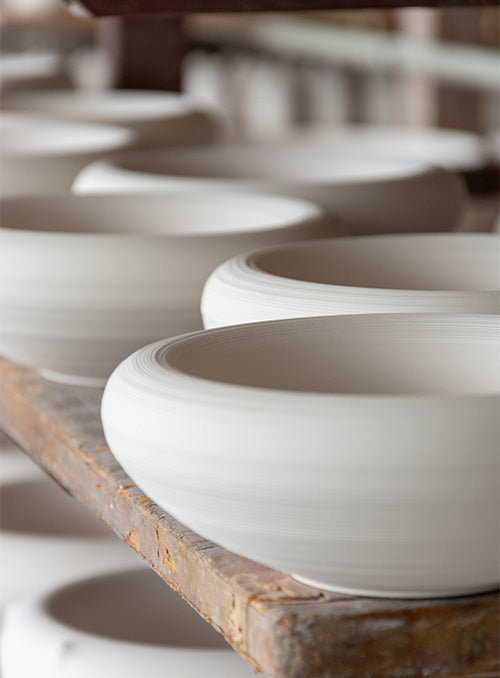
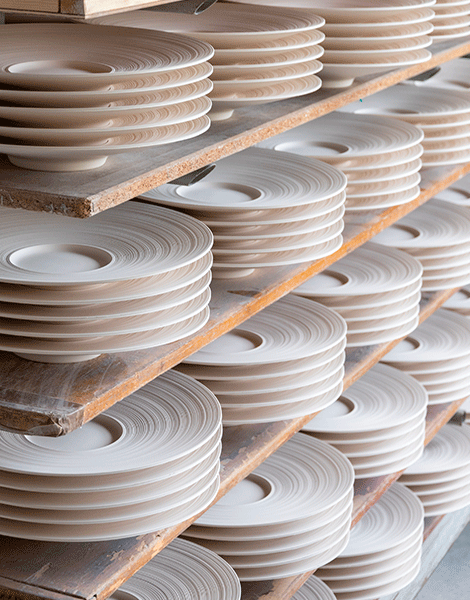
J.L Coquet
Porcelain J.L Coquet is the result of an alchemy between water, earth and the know-how of men. Our porcelain is distinguished by its whiteness, which has been the symbol for many years. It is recognized as one of the whitest, most translucent and delicate in the world. Obtaining a piece can require nearly twenty manipulations during which advanced techniques and know-how are intimately linked. Thanks to a unique engraving technique, the gold, platinum or other precious metal inlays highlight the decorations of our products while ensuring their irreversibility. This technique gives the colors and patterns a unique relief to sublimate each of our pieces.
The decorations
At the same time, thanks to a unique handmade satin finishing technique, a mineral juice is applied to certain parts of the piece in order to protect the matte finish of the cookie, while the enamel is deposited on the unscathed parts. This combination of matte and shiny effects offers unique aesthetic contrasts while preserving our products abrasive and marking materials. Rich of this experience recognized by the greatest chefs, our porcelain represents the French art of living and participates in the influence of the "made in France" know-how throughout the world.
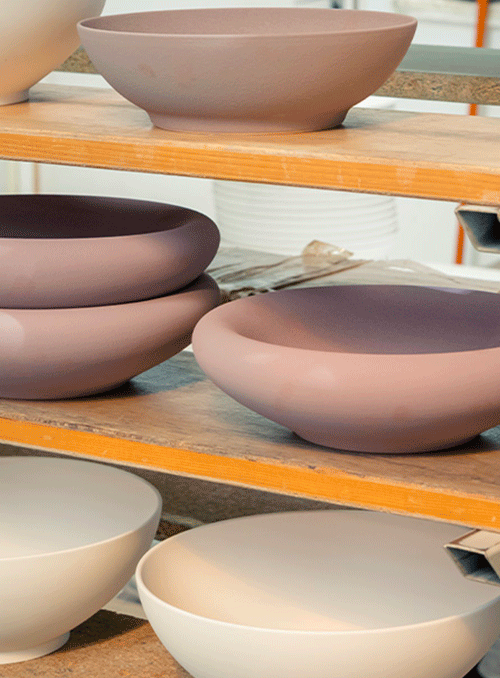
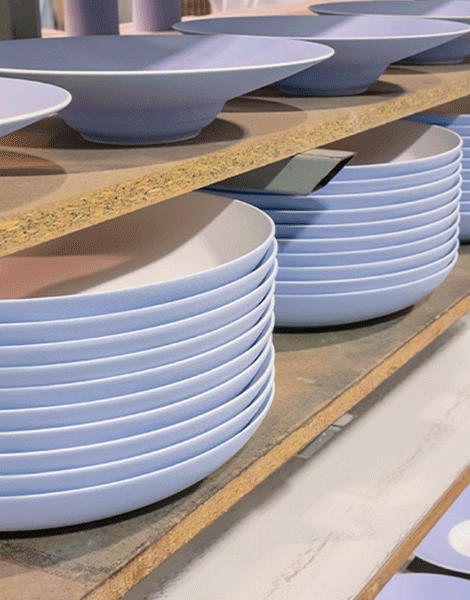
Jaune de Chrome
For more than twenty-five years, Jaune de Chrome has been producing in its factory in Saint-Léonard de Noblat, located a few kilometers from Limoges (Haute Vienne - France), products combining traditional porcelain work and contemporary finishing with a remarkable work of enamels, a rare characteristic of our company. This exclusive process makes our products absolutely remarkable. It consists in meticulously applying on the porcelain, an alloy of enamels and metallic components for a very surprising effect of matter.
The enamels
This technique requires great skill and a long training period so that each of our craftsmen can ensure a perfect mastery of the decorations. Even if the gesture is irreproachable, the process remains artisanal. Each piece has a unique dimension, with slight variations in the decoration during the firing process. Rich of this experience recognized by the greatest chefs, our porcelain represents the French art of living and participates in the influence of the know-how "made in France" in the whole world.
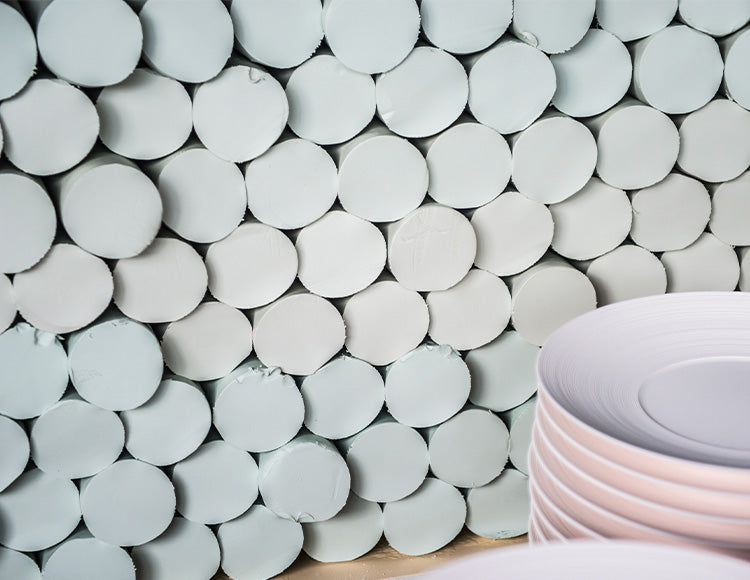
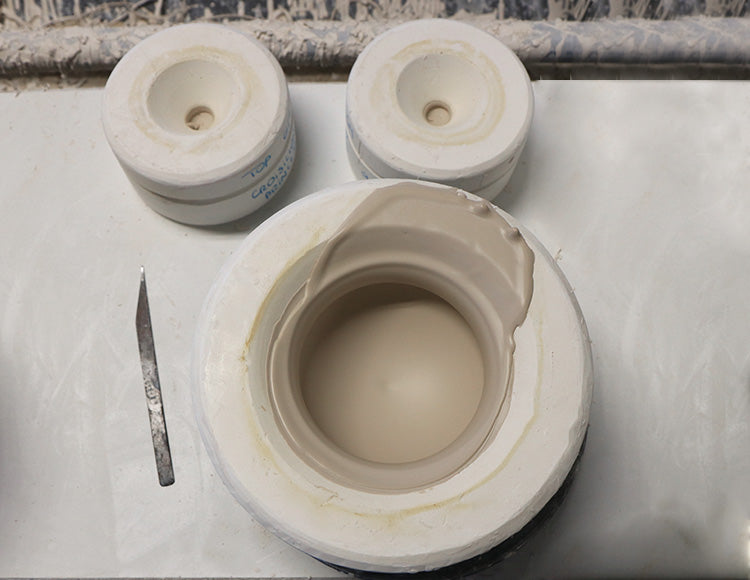
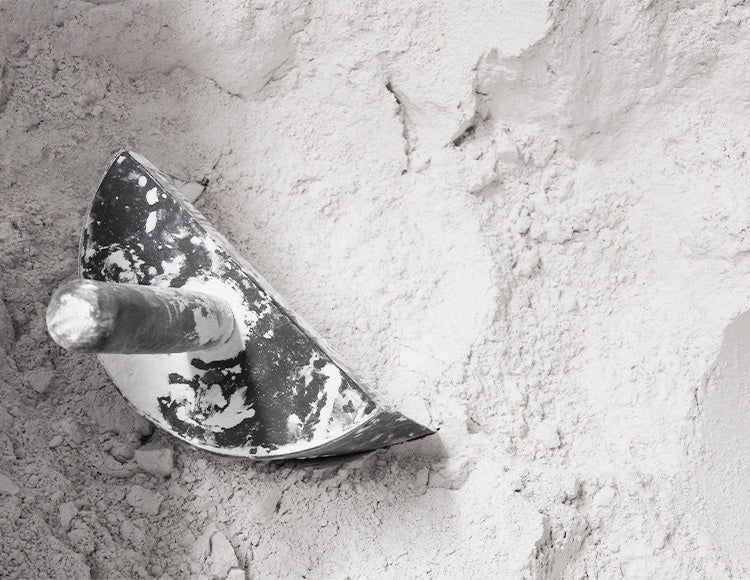
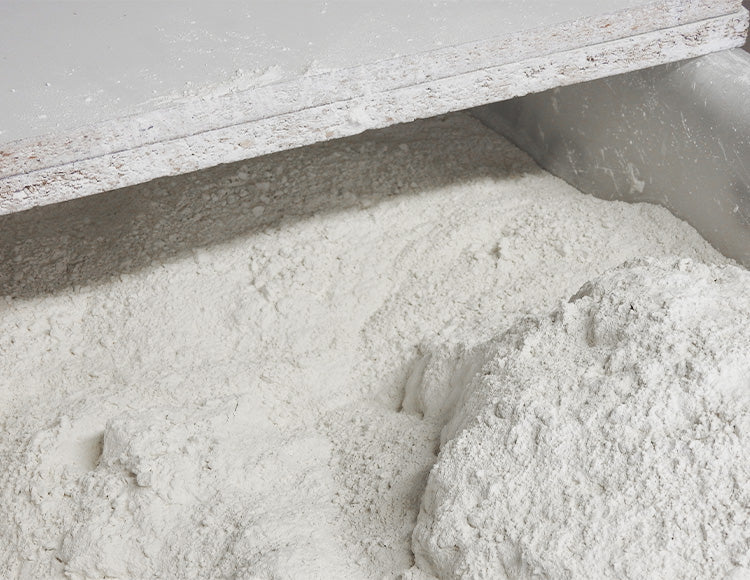
The porcelain paste
Porcelain paste is composed of 50% kaolin, 25% quartz and 25% feldspar. These materials are diluted in water, crushed, mixed, sifted and filtered, to be presented in the form of cakes before being transformed, according to the manufacturing techniques, in more or less liquid paste.
The paste comes in 3 forms,
- Liquid, called slip, it is used for casting.
- Deaerated and kneaded in the form of semi-soft dough pellets, it is used for sizing.
- In powder form, obtained by atomization to obtain tiny granules, it is then compressed by isostatic pressing.
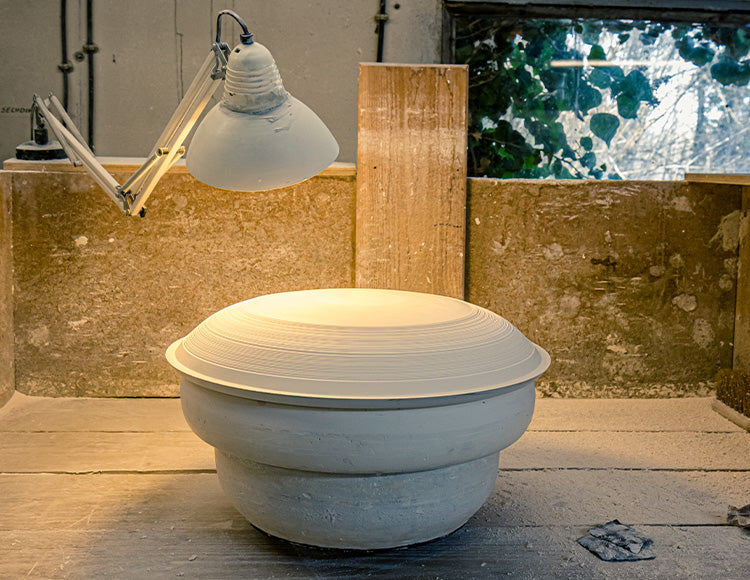
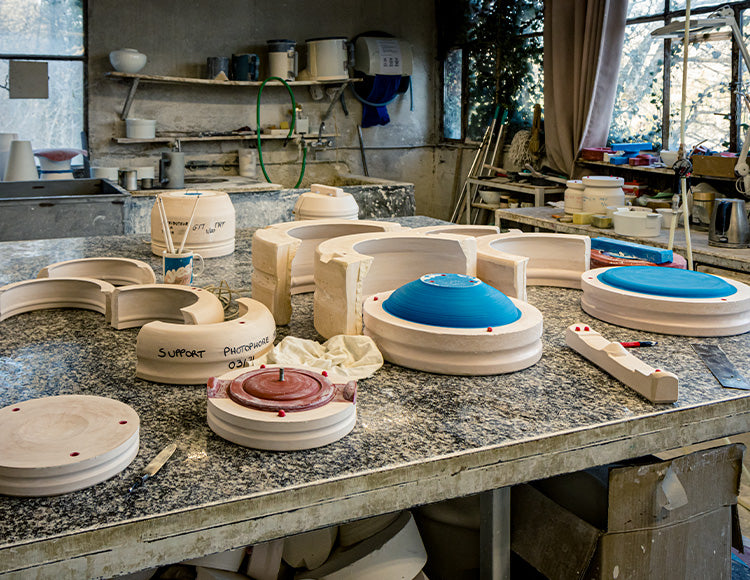
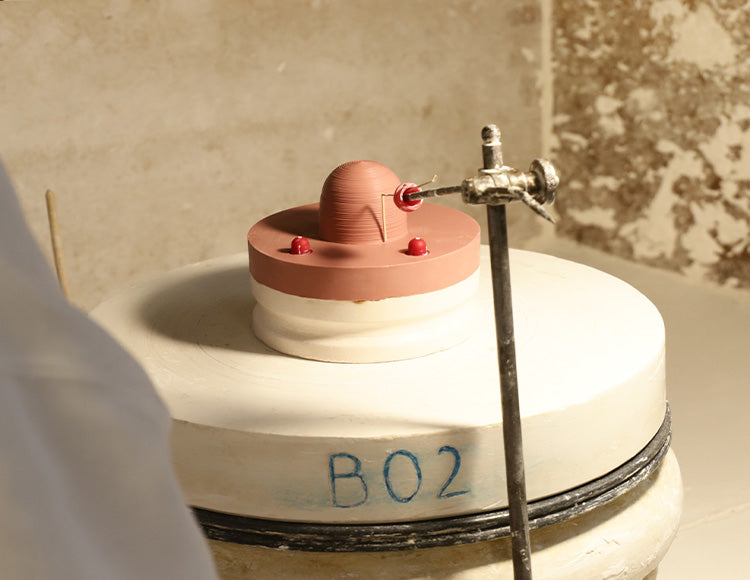
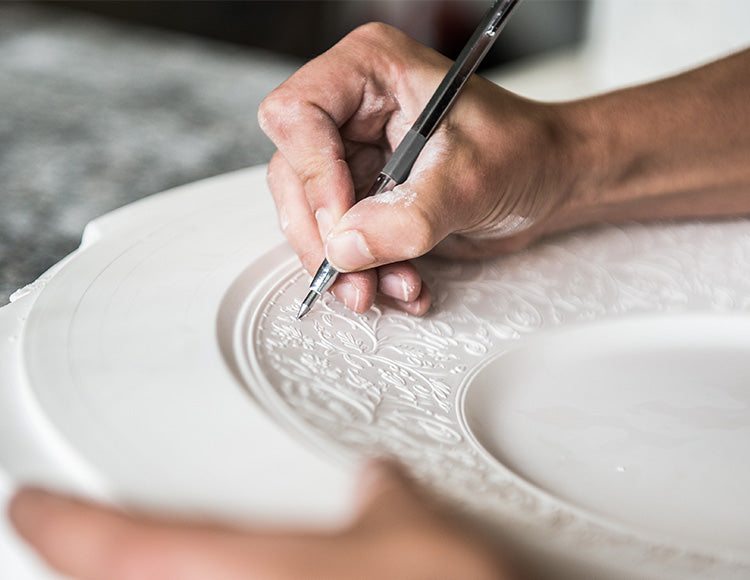

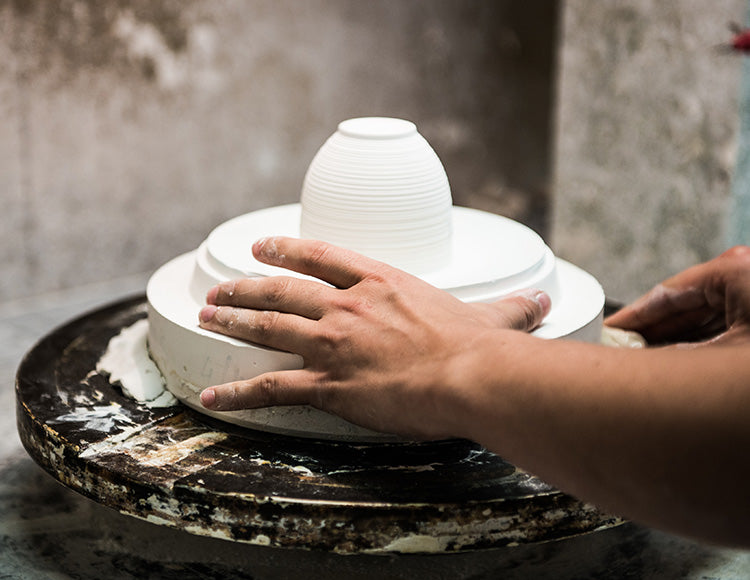
Modelling
In our modeling workshop, the modelers create the model from a drawing that will allow the creation of the molds. This model is made in plaster with a scale 14% larger than the real size. This allows us to anticipate the reduction of the piece during the firing process. This model will allow the creation of the mother mold which will allow the production molds to be drawn.
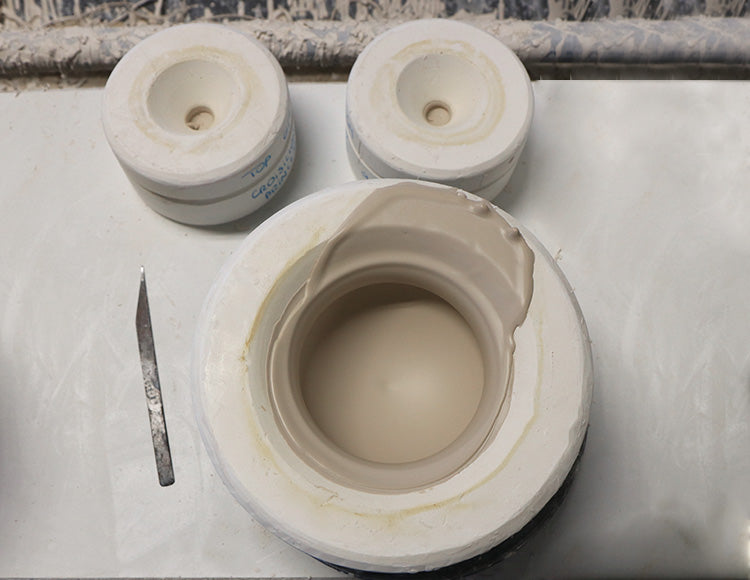
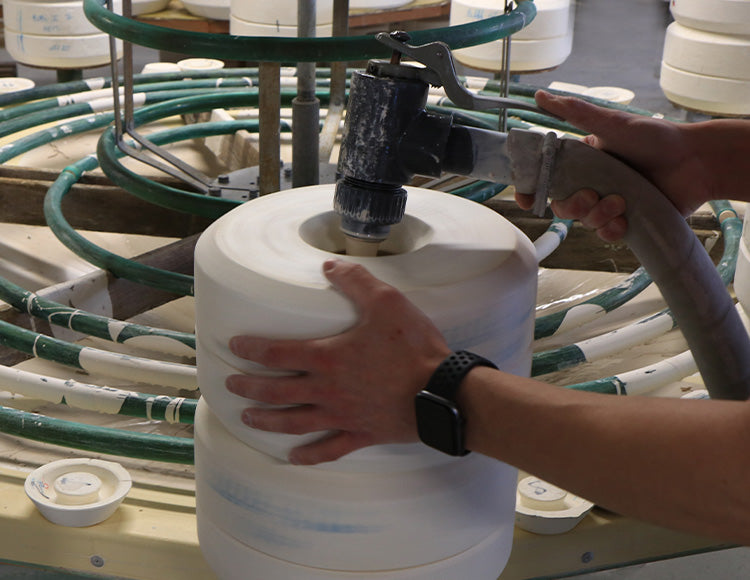
Casting
It is a process used from the liquid porcelain paste (slip) poured into plaster molds. This process is used for hollow pieces (cups, flasks, Creamer, vases...). The liquid porcelain is fixed against the wall of the mold. After a time of setting, the excess slip is rejected and the pieces can be removed from the mold.
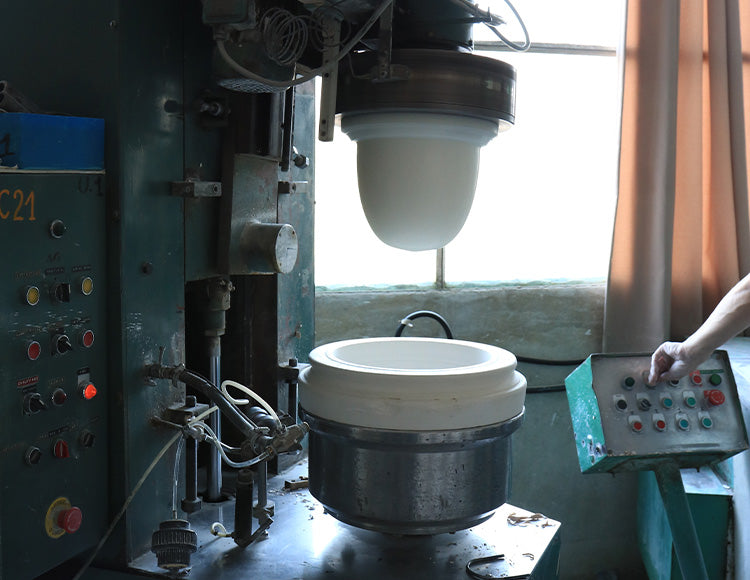
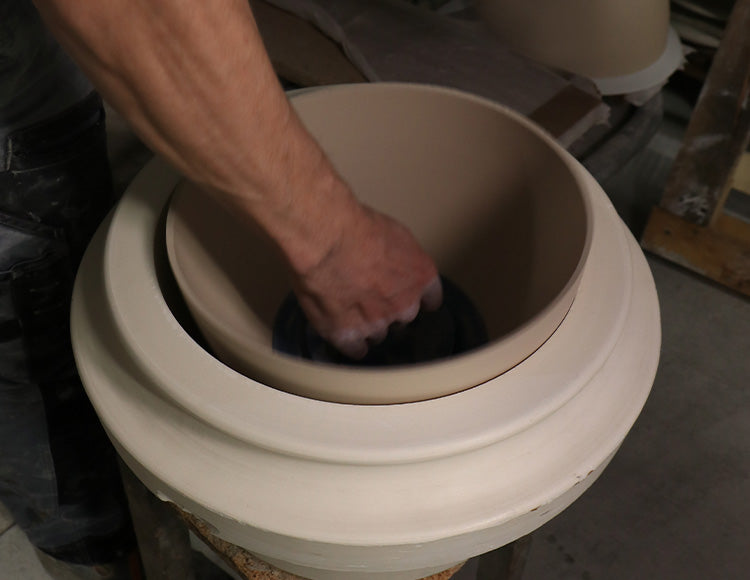
Calibration
From the semi-soft porcelain paste and
cut into a disc shape, the sizing allows to make round and hollow pieces such as plates, dishes, salad bowls or cups. A disc of dough is placed in the plaster mold, which is itself placed on a lathe. A metal gauge is lowered, crushes the dough so that it is distributed against the walls of the mold and cuts off the excess.

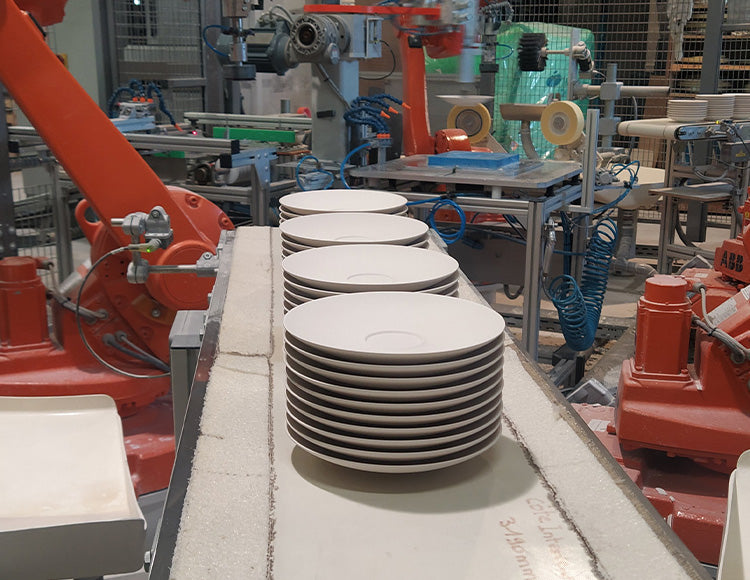
The isostatic press
The paste, in the form of powder, is compressed at a high pressure inside a steel and polyurethane mold. The porcelain powder becomes compact and forms the object.
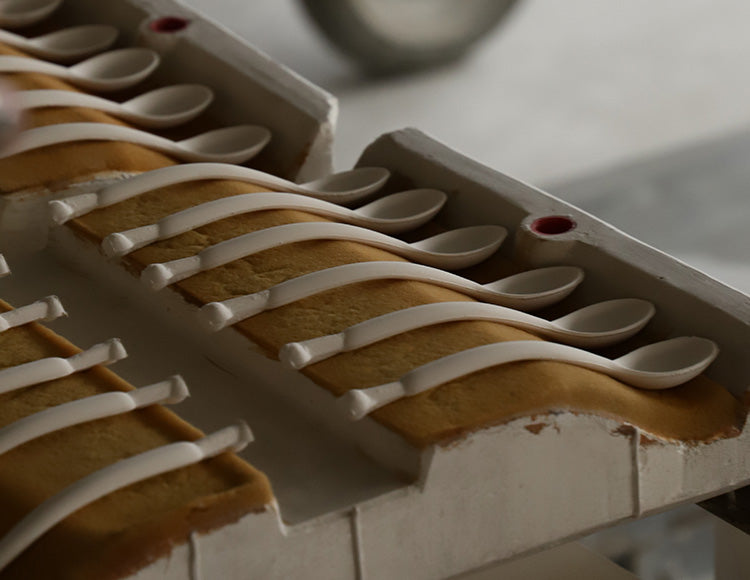
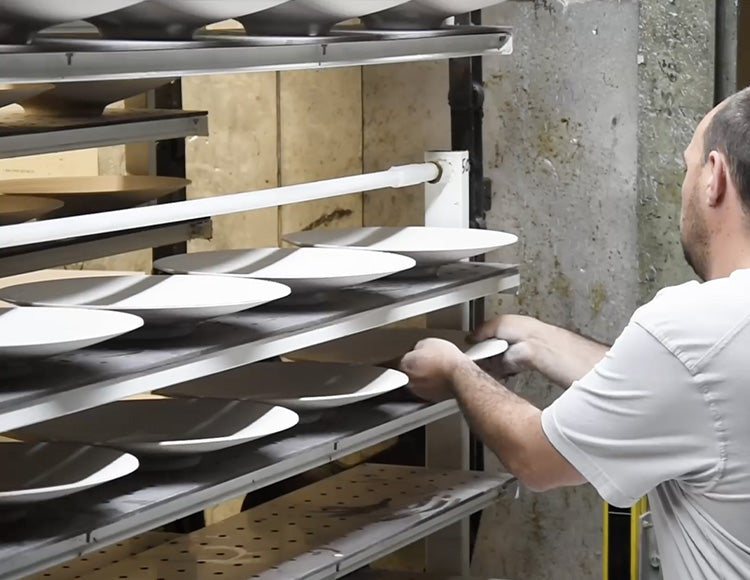

Drying
After removal from the mold, the pieces are dried between twelve and twenty-four hours to remove any water that may be in the porcelain.
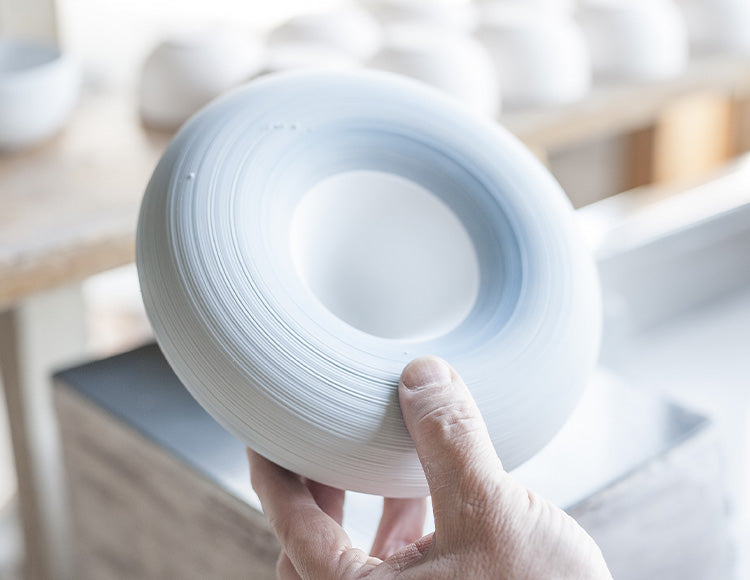

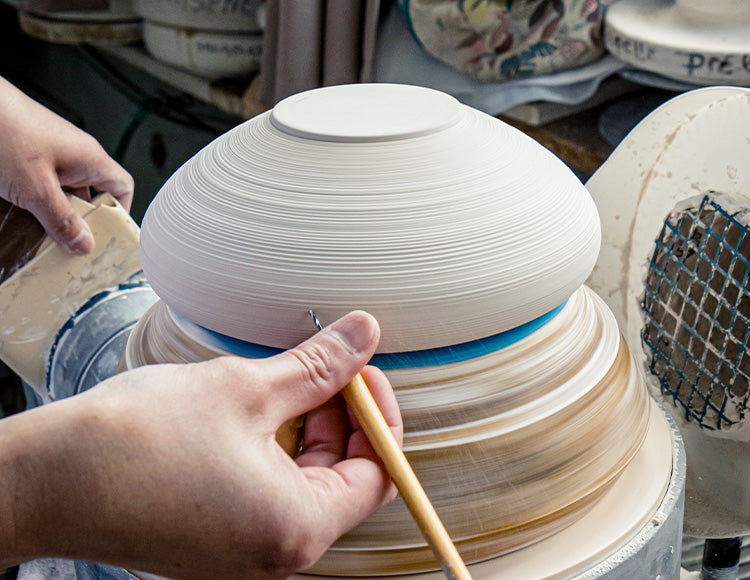
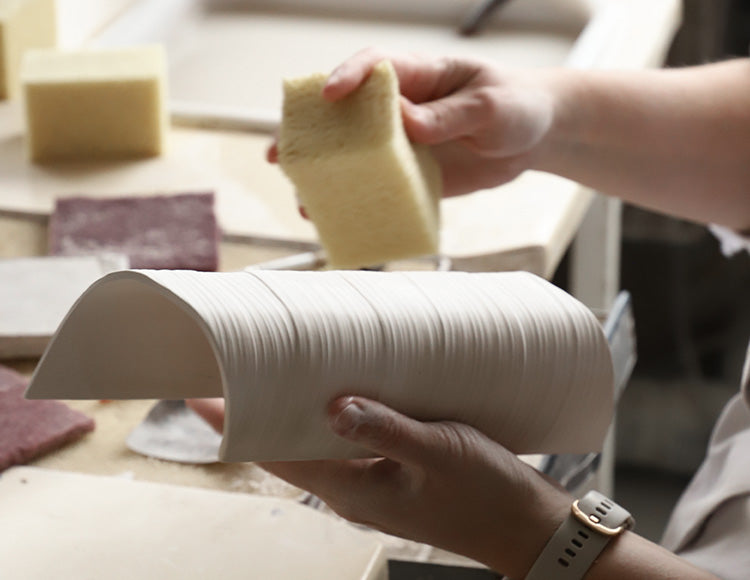
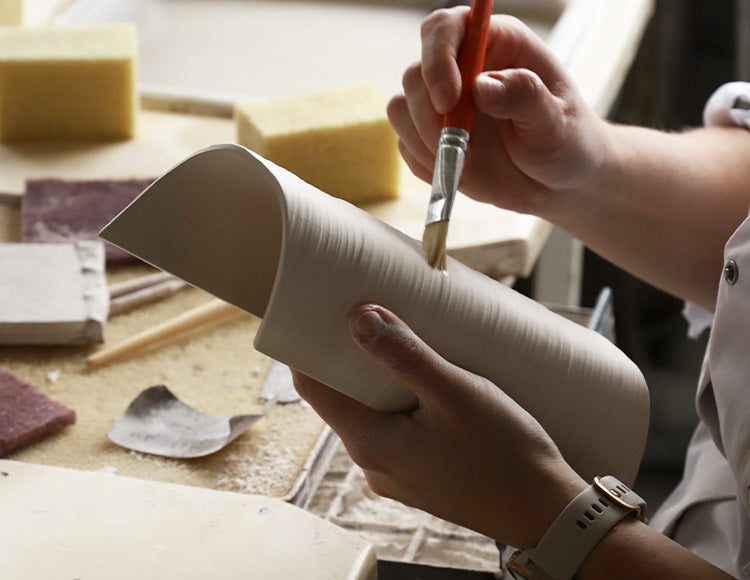
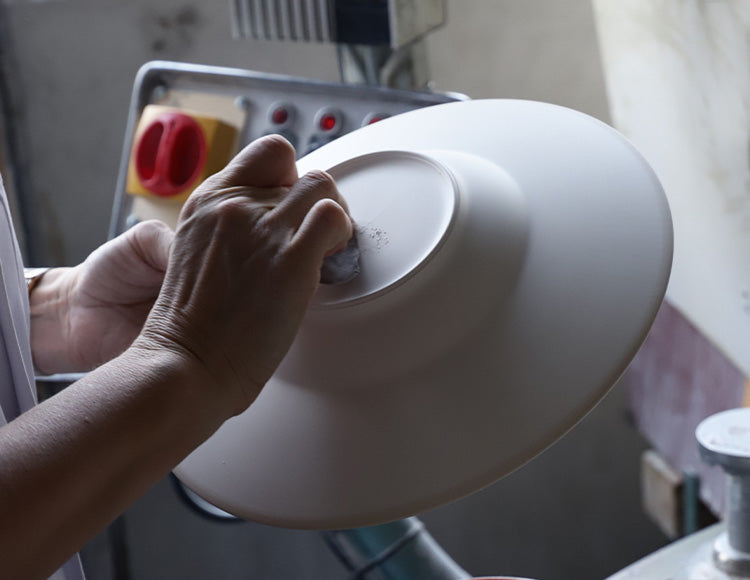
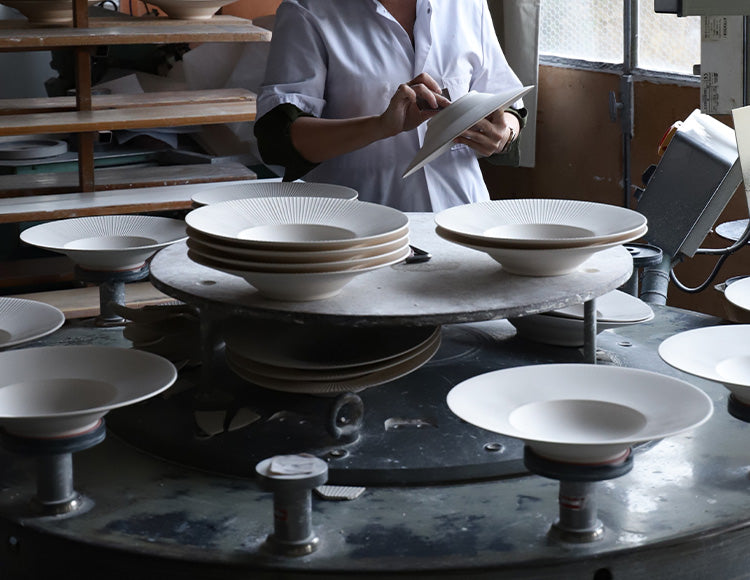
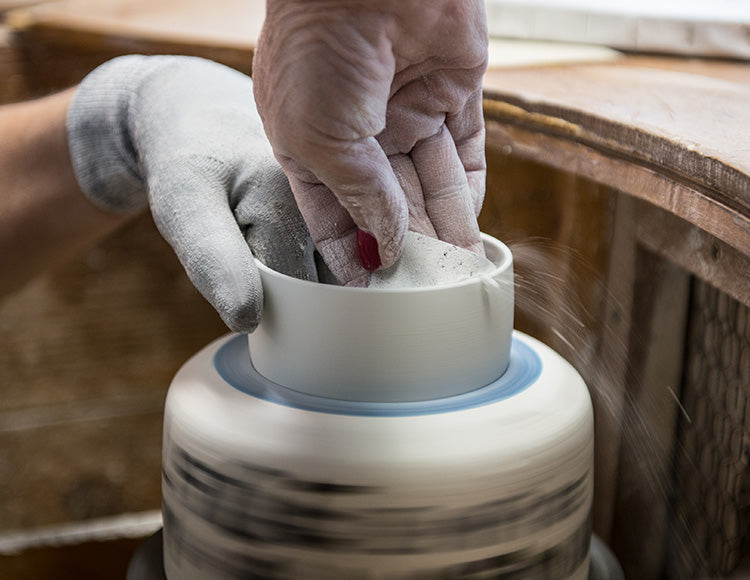
The Finish
A crucial step in the manufacturing process, finishing removes any imperfections and seams caused by dividing the mold into several parts. Craftsmen use files and sponges to remove dust.
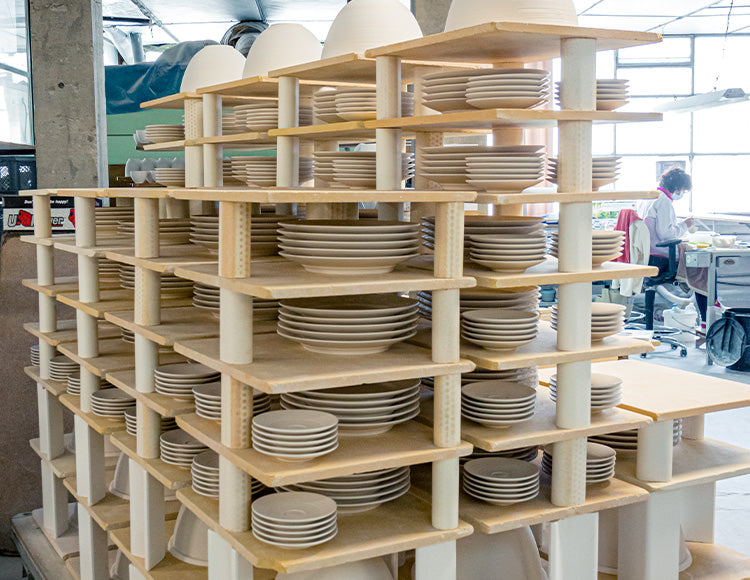
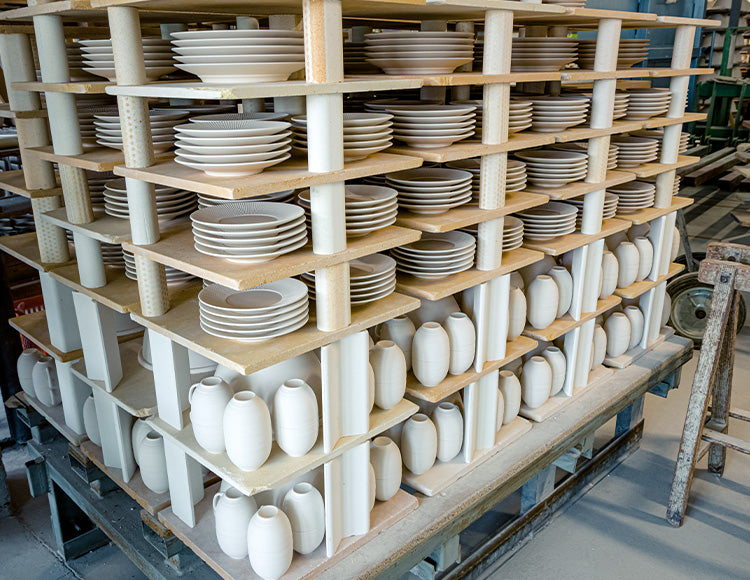
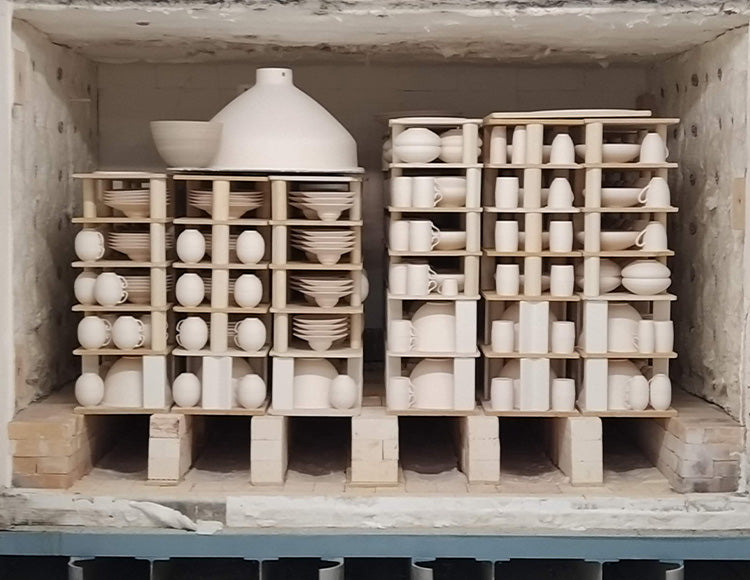
First cooking
The pieces are first fired in gas ovens at 980° C for 24 hours. This firing, known as the degourdi firing, hardens the pieces, dehydrates them by removing excess water and makes them porous so that the glaze can then be fixed on the surface.
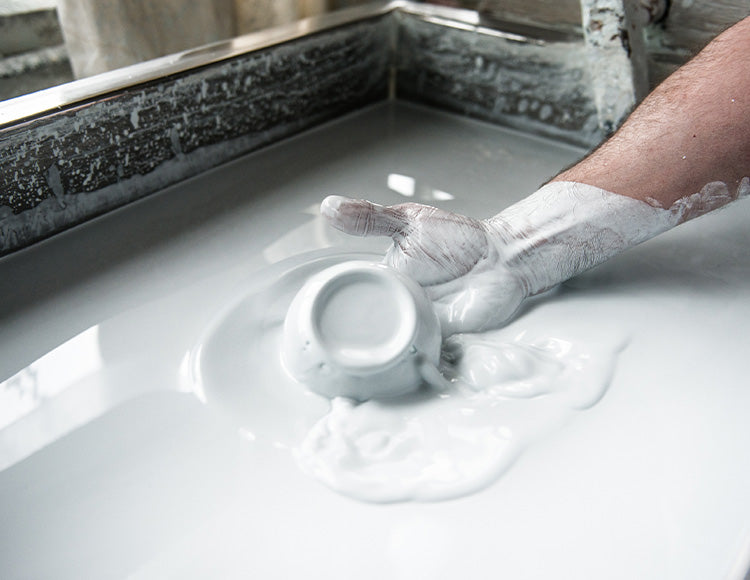
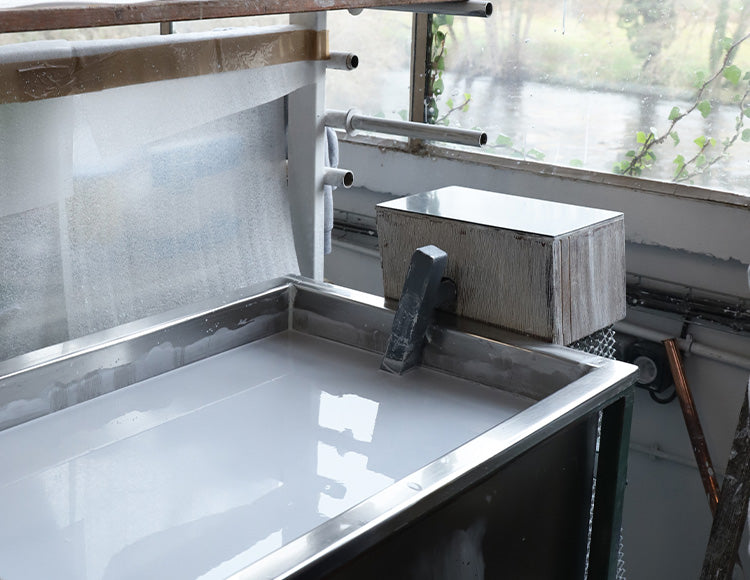
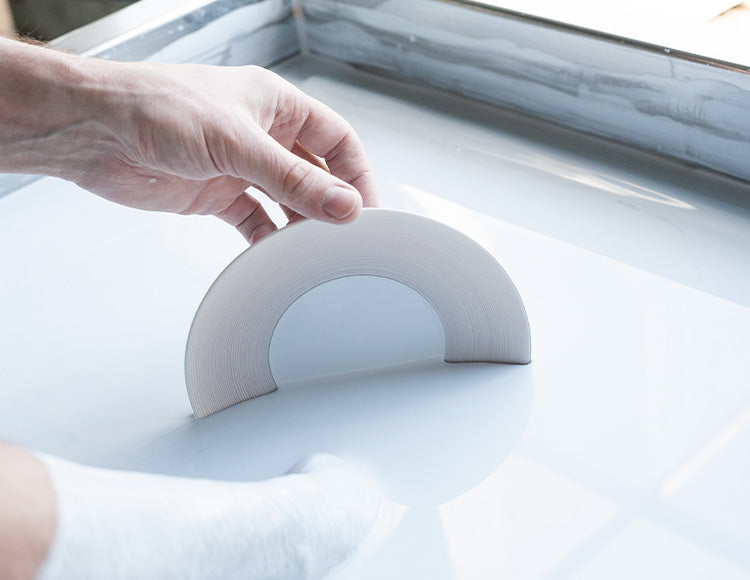
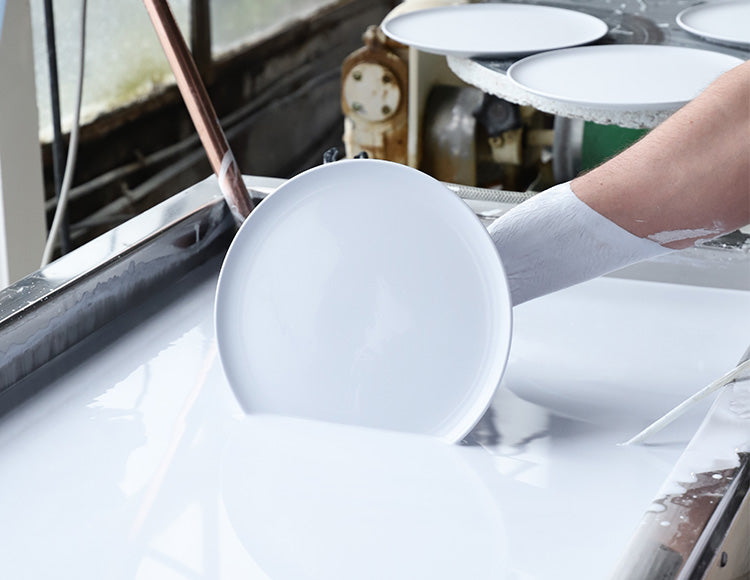
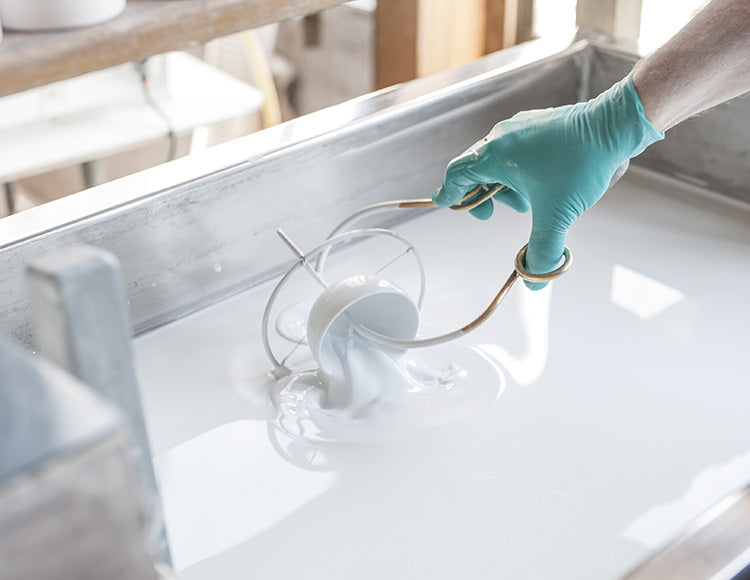
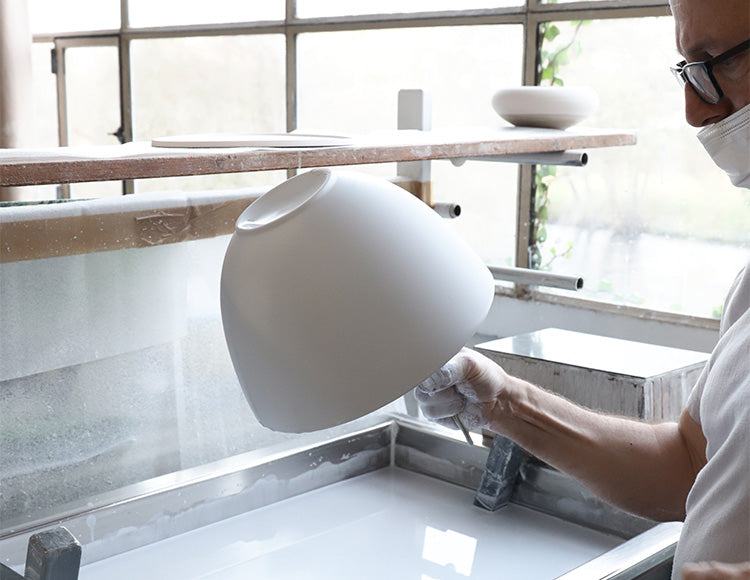
Enameling
Each piece is hand-dipped in a bath of enamel to achieve a smooth and shiny appearance.
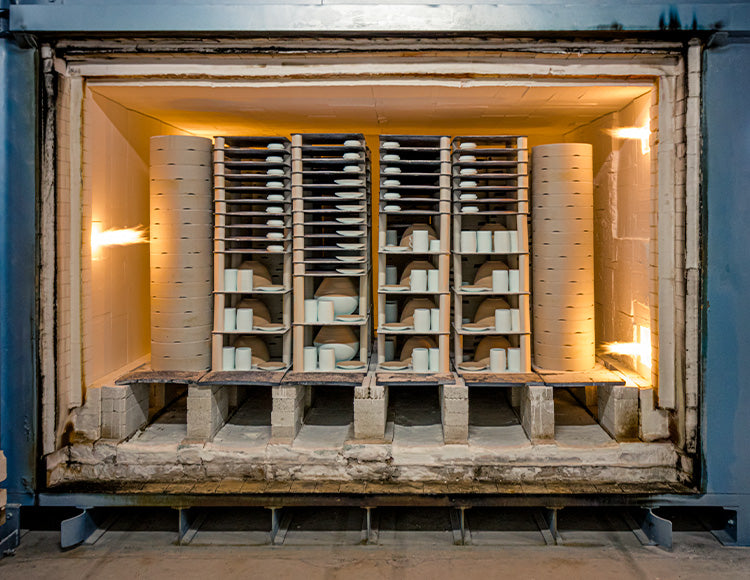
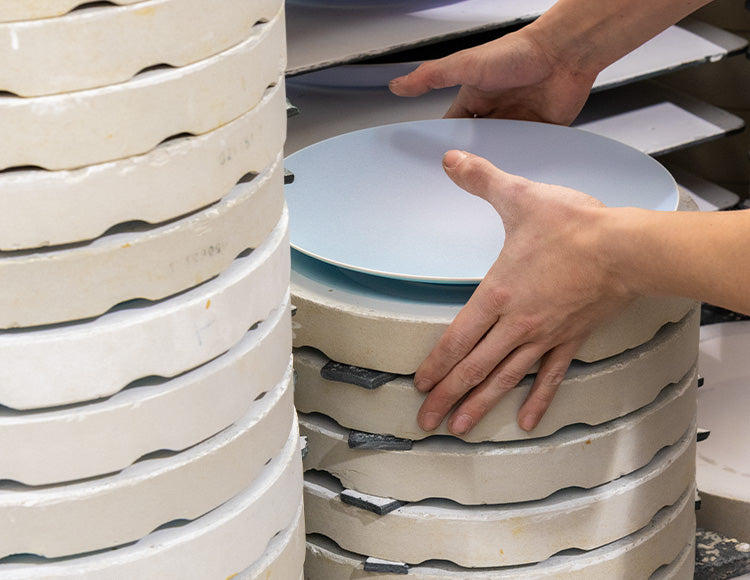
The second firing
The pieces then undergo a second firing, called the high fire firing, at 1,400° C for twenty-four hours. The purpose of this firing is to vitrify the paste and the glaze in order to develop the whiteness, translucency and solidity of the porcelain. It is during this firing that the piece takes most of its shrinkage (10% to 12%) compared to the model and reaches its final size.
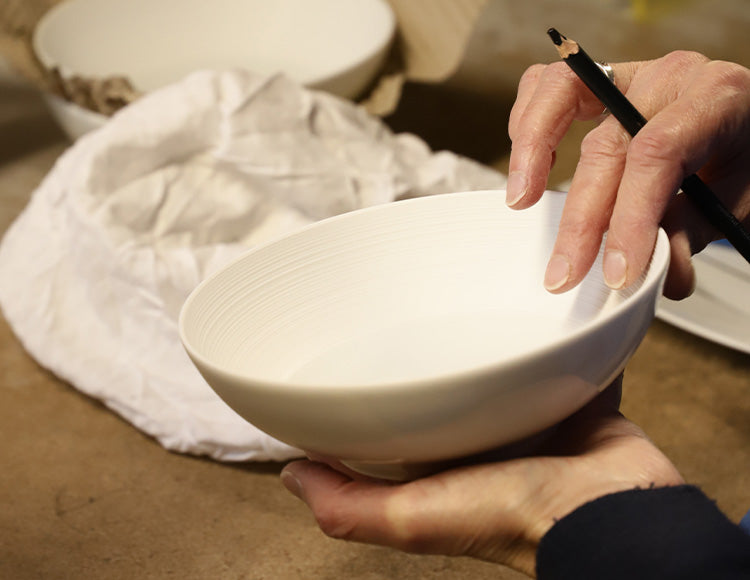
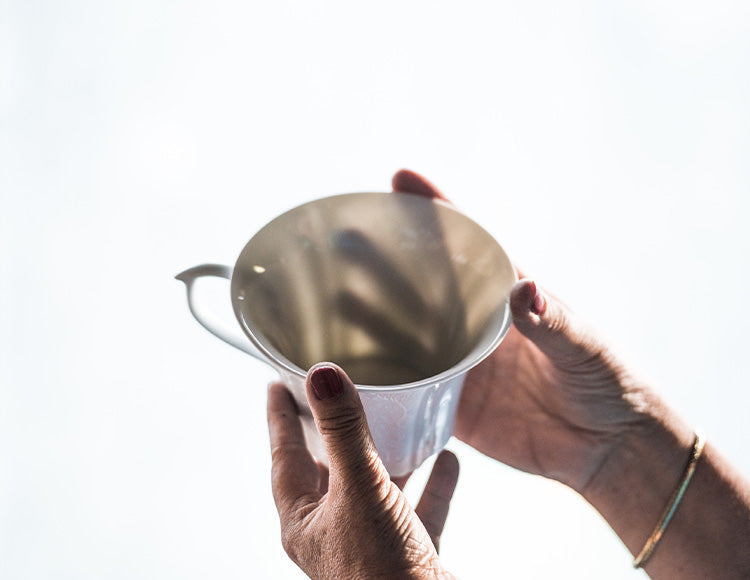
Sorting
This is the last step in the production of the white. All the pieces of the production are checked one by one and chosen according to their quality level to be then distributed in our various points of sale.
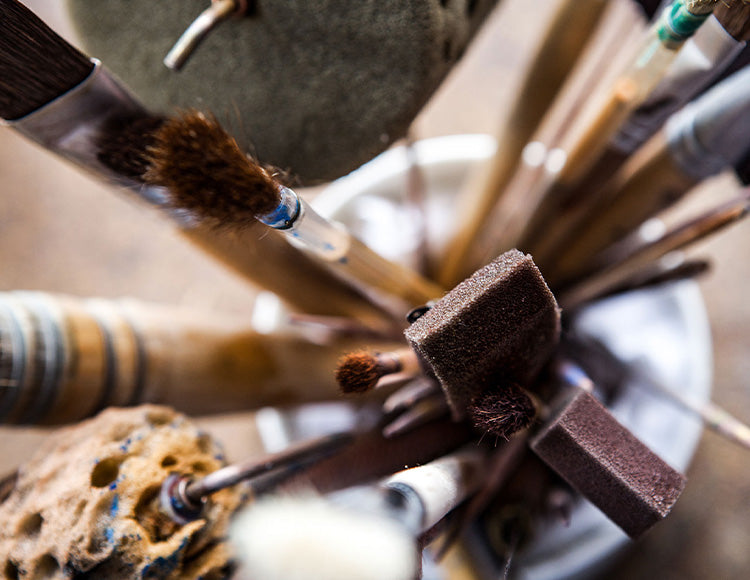

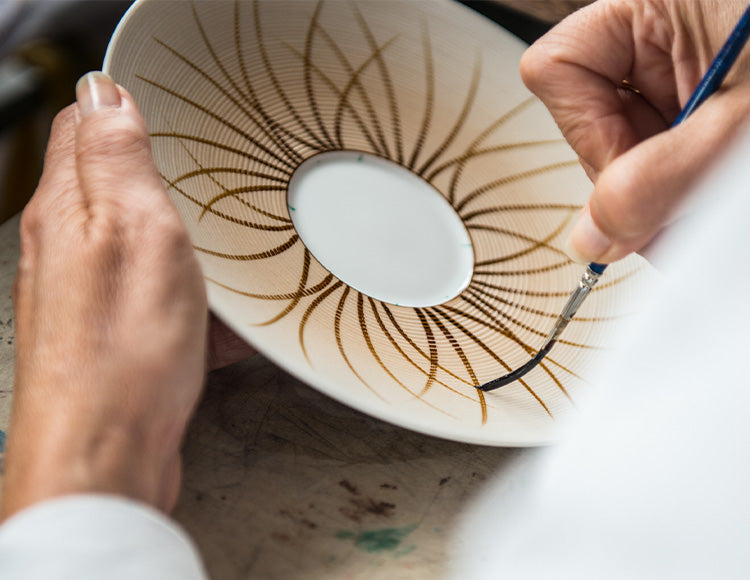
The decoration
Depending on the style of the collection, the installation of the decoration is more or less complex. Some valuable pieces are painted by hand and the craftsmen show exceptional dexterity by using
a wide variety of brushes.
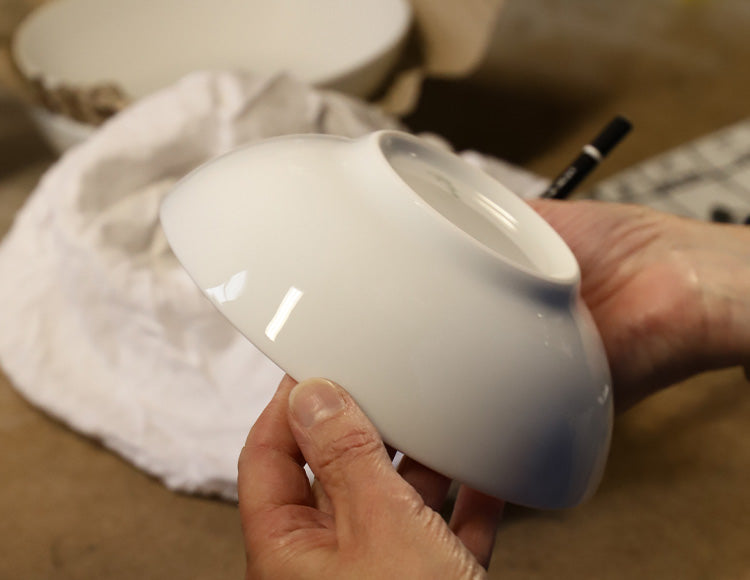

Quality control
Before leaving for its final destination, each object is carefully checked after each operation, in order to offer a product of very high quality.
